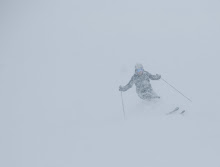
While I was in Zermatt,I was repeatedly reminded of the scale of human endeavor through history. Like many, I have forgotten much of what I learned in school. When I saw the Alps, fragments of school learning came back to me. In particular, I recalled that Hannibal had crossed the Alps on an elephant. As an eighth grader, I simply memorized the fact and didn't consider its implications. Two weeks ago, when I first thought of Hannibal and the distances and terrain that an elephant would have had to travel, I was astounded by the implications. What vision could have foreseen that the steady lumbering gait of an elephant could provide footing in the mountains? How were the animals fed? What other logistics were involved? I struggle to imagine elephants crossing the Alps now in 2007 when helicopters ferry goods from base to peak. How could elephants and an army have crossed the Alps roughly 200 years B.C. during the Second Punic War?
Historians still debate Hannibal's actual route across the Pyrenees and Alps. It seems clear, however, that the elephants originated in North Africa and the army is speculated to have included 38,000 infantry, 8,000 cavalry and 37 war elephants. No wonder Hannibal is attributed with the famous quote " We will either find a way or make one."
I visited the Matterhorn museum in Zermatt, expecting to learn more about the 20th century climbers who scaled its peak. I did learn about them but I also learned that in 1985, the glacier released the remains of an armed man dating back to the 16th century. Even with modern footwear and oxygen canisters, the glaciers and peaks near the Matterhorn are treacherous. Yet, 500 years ago men sought to traverse the mountain peaks. Their legacy was captured in glacial ice and now their iron weapons remain.
A display featured pictures of a more modern man. Ulrich Inderbiner qualified as a mountain guide at the age of 25 and actively worked until he was 95. He stood on the peak of the Matterhorn more than 370 times between 1925 and 1995. He died at the age of 104. He wrote: "I live how I climb a mountain, my walk and rhythm is slow and deliberate, steady and determined".
What amazing things we humans can achieve.

No comments:
Post a Comment